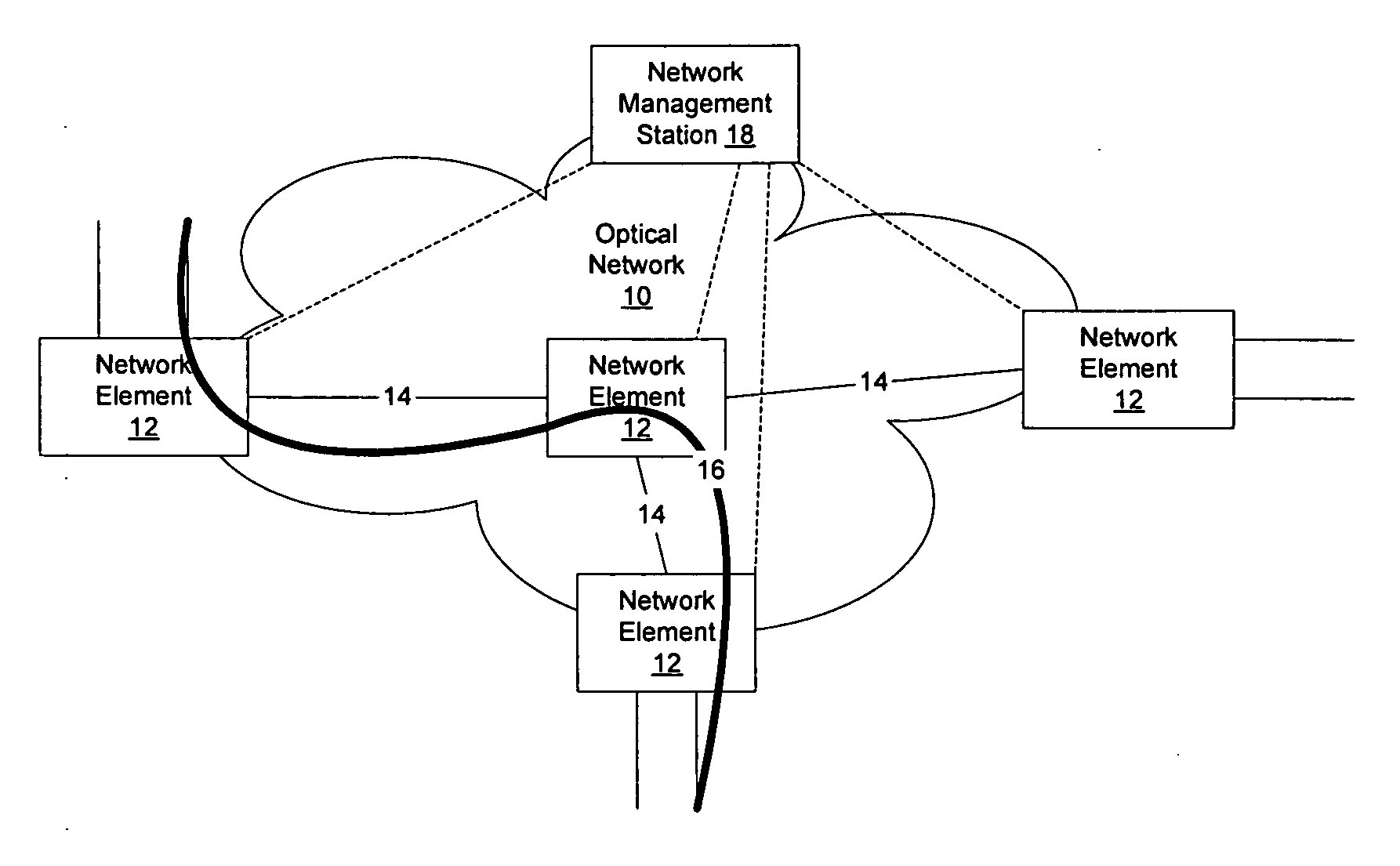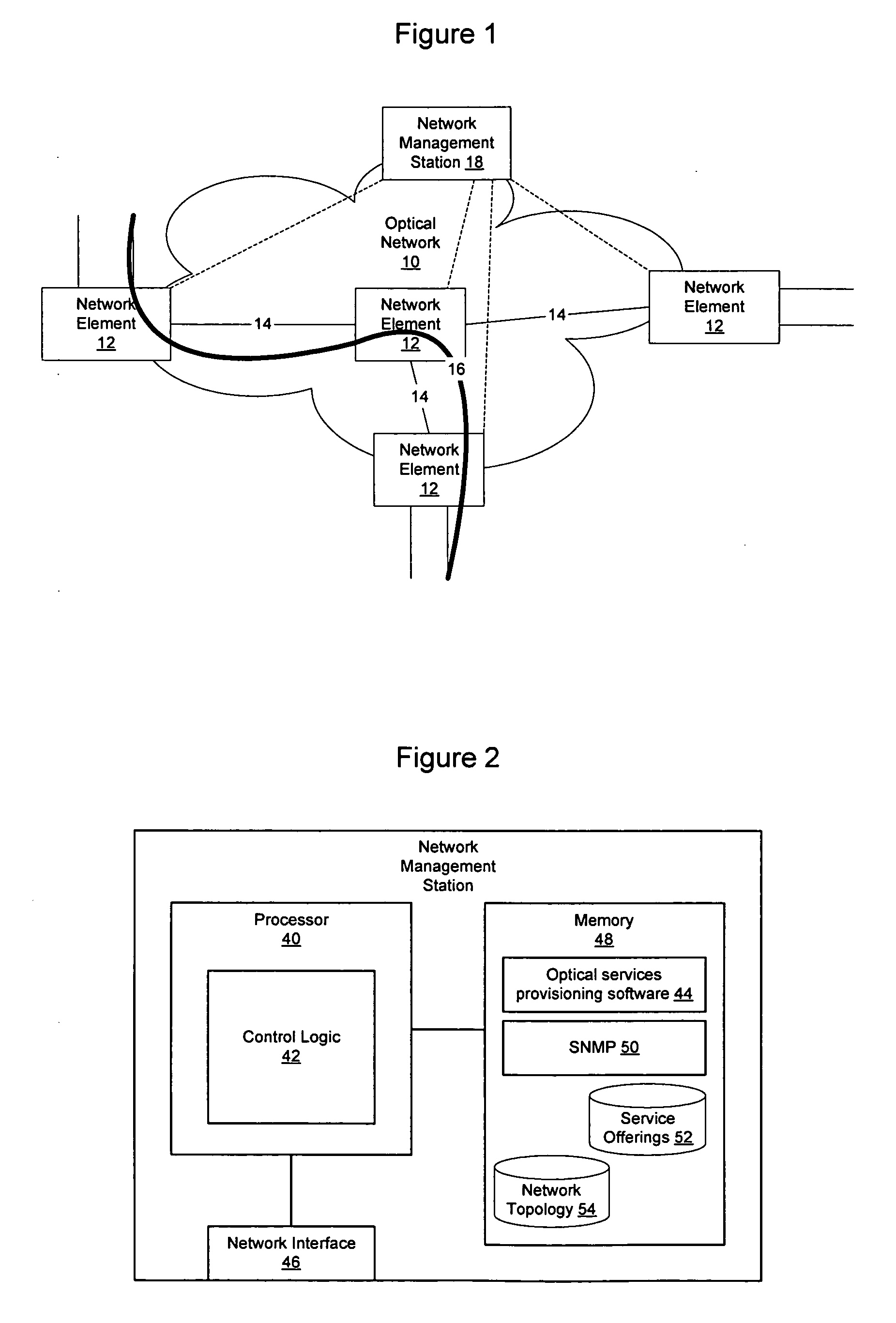Method and apparatus for provisioning optical services on an optical network
a technology of optical network and optical service, applied in the field of network management, can solve the problems of complex optical connection management, complicated manner in which a service must be provided, and extensive training of optical service provisioning systems
- Summary
- Abstract
- Description
- Claims
- Application Information
AI Technical Summary
Benefits of technology
Problems solved by technology
Method used
Image
Examples
Embodiment Construction
[0042] The following detailed description sets forth numerous specific details to provide a thorough understanding of the invention. However, those skilled in the art will appreciate that the invention may be practiced without these specific details. In other instances, well-known methods, procedures, components, protocols, algorithms, and circuits have not been described in detail so as not to obscure the invention.
[0043]FIG. 1 illustrates an example of a portion of an optical network over which optical services may be provisioned. As shown in FIG. 1, an optical network 10 generally includes a plurality of network elements 12 interconnected by optical links 14. Services 16 may be provisioned through the optical network by defining connections through the network elements 12 that will enable data to be passed over a particular path including selected optical links. A network management station 18 may be provided to provision the optical services on the optical network.
[0044] As us...
PUM
 Login to View More
Login to View More Abstract
Description
Claims
Application Information
 Login to View More
Login to View More - R&D
- Intellectual Property
- Life Sciences
- Materials
- Tech Scout
- Unparalleled Data Quality
- Higher Quality Content
- 60% Fewer Hallucinations
Browse by: Latest US Patents, China's latest patents, Technical Efficacy Thesaurus, Application Domain, Technology Topic, Popular Technical Reports.
© 2025 PatSnap. All rights reserved.Legal|Privacy policy|Modern Slavery Act Transparency Statement|Sitemap|About US| Contact US: help@patsnap.com



